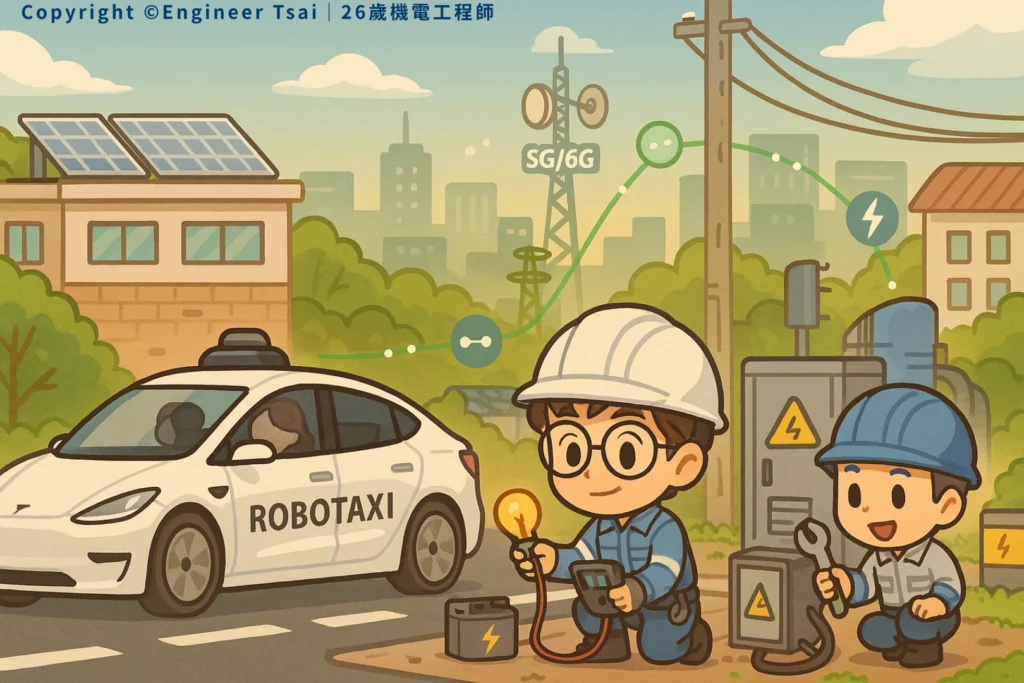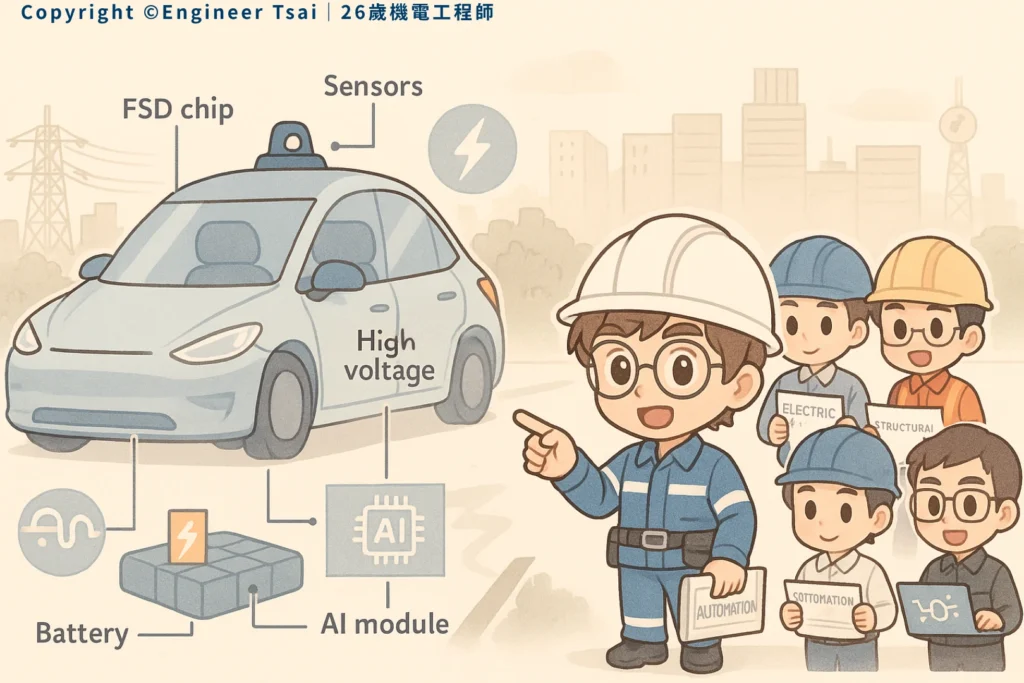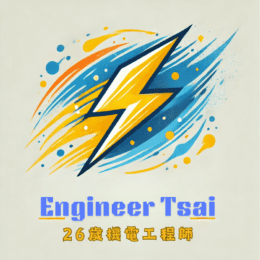🔗 News Recap:
Tesla just confirmed that its Robotaxi service will officially launch in Austin, Texas, by August 2025—and yes, it’s really happening.
Insider reports say the vehicle will have no steering wheel, no pedals, and will feature a fully enclosed minimalist cabin.
Elon Musk calls it a “disruptive revolution in transportation efficiency,” centered around Full Self-Driving (FSD) tech and a shared mobility model.
🚗 Let’s be real: Think this doesn’t concern engineers like us?
Think again—it could decide whether your skillset still gets you paid in the future.
When I first saw news that Tesla Robotaxi are about to hit real streets, my reaction wasn’t “Cool, another flashy EV.”
It was:
“This isn’t just tech hype anymore—this is about to collide with our everyday work.”
A lot of folks think this is just more Musk marketing.
But if you’re in engineering—electrical, civil, systems, mechanical—you should be asking:
✔️ How exactly does the system operate?
✔️ Is our city infrastructure—power, data, roads—even ready for this?
✔️ Will this impact my job or field? And how should I adapt?

🔍 Break It Down: What Problem Is Robotaxi Really Solving?
It’s not just about “taking the driver out of the car.”
It’s about redesigning the entire transportation system.
Here’s what Tesla Robotaxi actually includes:
🚗 A fully vision-based Full Self-Driving (FSD) algorithm
🧠 AI-powered decision-making and live traffic prediction
🛰️ A fleet dispatch system (think Uber, but fully autonomous)
🧩 A modular cabin that can be adapted for passengers—or future use cases like cargo or mobile services
📌 Construction Site Analogy 💡
Imagine a site manager who doesn’t just read blueprints, but can predict concrete progress three days out.
That’s what Robotaxi does—it doesn’t just “see,” it predicts what’s likely to happen every second ahead.
That level of foresight relies on tight coordination between algorithms, sensors, and reaction mechanisms.
🏙️ But Can the City Keep Up? Here’s Where the Real Engineering Test Begins
Robotaxi can’t go mainstream just because the tech is cool.
The entire city has to step up its game to support it.
🔌 Power Supply: Fast-charging needs will reshape the city’s substation layout
📶 Communication: FSD is super sensitive to latency—nationwide 5G (or even 6G) is a must
🛣️ Road Quality: Clear lane markings, smooth surfaces—one pothole or faded line can throw it all off
📌 Replicable Insight 💡
Think of Robotaxi as a stress test for smart cities.
From power grid upgrades, to fiber optics, to road paint—you’re already building the foundation if you’re pulling cable, upgrading panels, or redoing traffic markings.
🧠 What This Means for You—From an Engineer’s POV
If you’re in electrical, control systems, mechanical design, or field engineering: this is your moment.
📌 Electrical & Power Systems: High-voltage fast charging and swappable battery modules will be the new normal
📌 Automation & Controls: We’re moving from single-device control to decentralized, multi-vehicle coordination
📌 Mechanical Design: Expect demand in thermal management, crash safety, and modular chassis design
This isn’t just a new car—it’s a whole new system mindset.

📣 Final Take: This Isn’t Just Tech Hype—It’s a Real-World Shift That Affects Us All
Not everyone needs to write autonomous driving code.
But every engineer needs to understand the structural shift that’s coming.
🛠️ Whether you’re into electrical wiring, piping, telecom, BIM, architecture, or MEP design—
If you work in the built environment, Robotaxis will touch your job sooner or later.
Here’s the one-line summary:
It’s not just cars evolving—it’s entire cities upgrading. And you’re going to be part of that upgrade.
💬 What do you think? Could Robotaxis safely operate on Taiwan’s streets today?
Drop your thoughts below—and stay tuned, next post we’ll dive into:
“Robotaxis vs Construction Sites—Collision Course or Collaboration?”
📌 Further Reading
🔹 How Do Electric Motor Work? DC, AC, and Brushless Motors Simplified
Learn how motors work—the core behind motion control in every autonomous vehicle.
🔹 Inductance Basics: Understanding Its Role in Power and Wireless Tech
Understand how inductors shape power delivery in EVs and smart energy systems.
🔹 Common Multimeter Mistakes and How to Avoid Them
Build your hands-on intuition—master how even small voltage shifts affect entire system behaviors.
👉 If you’re into breaking down tech trends from an engineer’s lens,
follow me and let’s keep sharpening those skills together. 🔧


